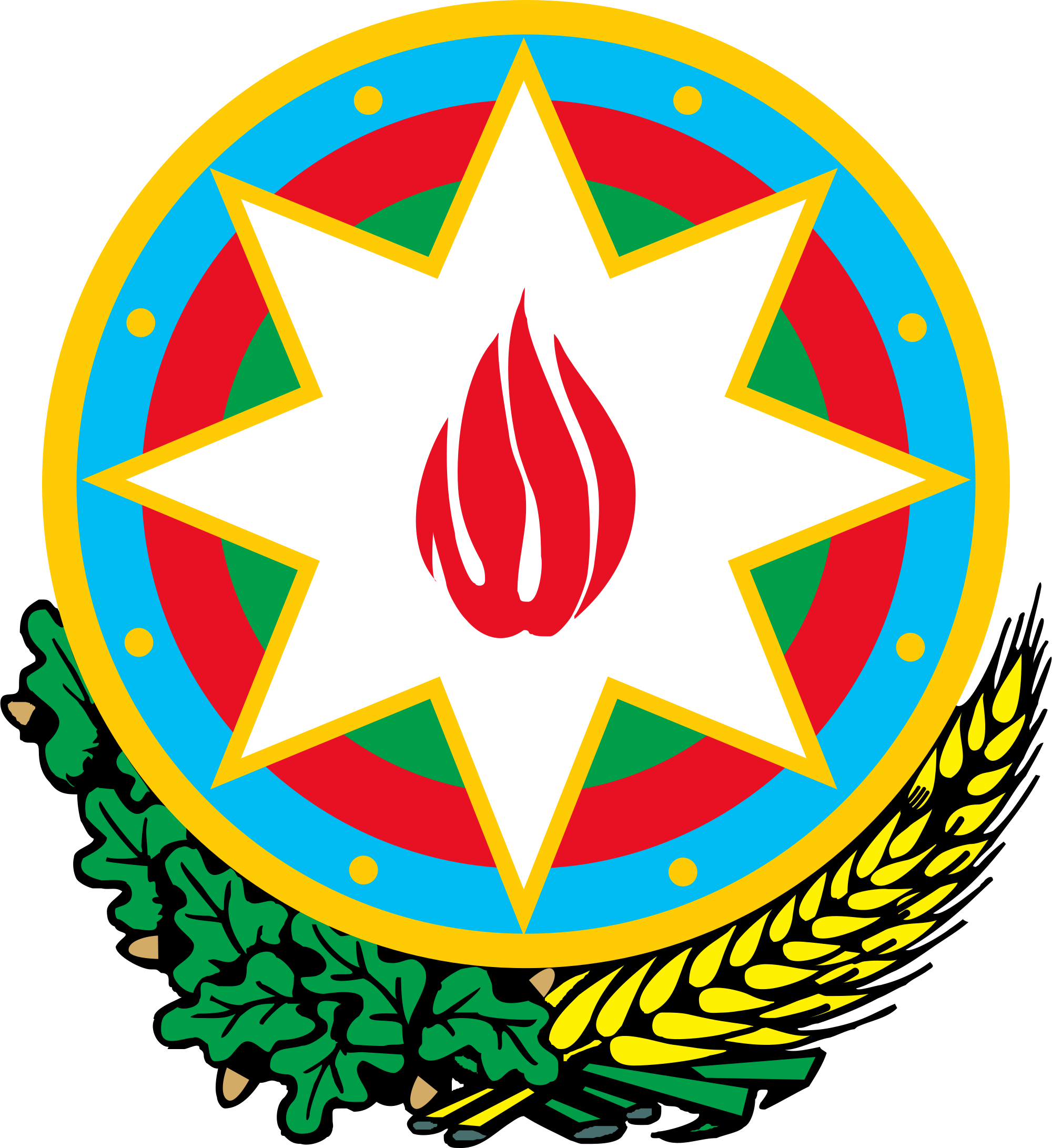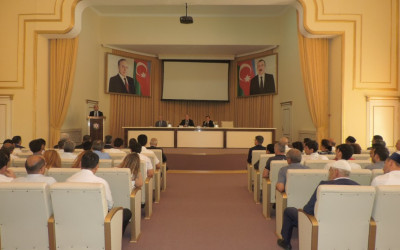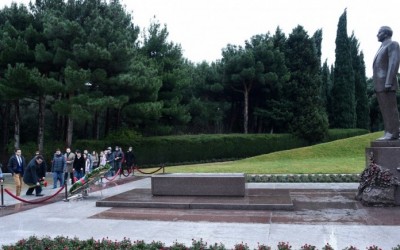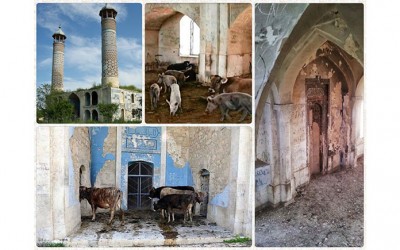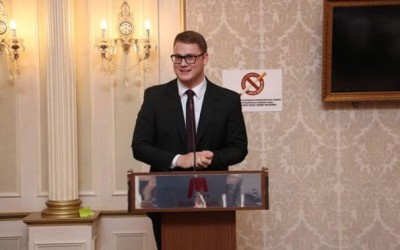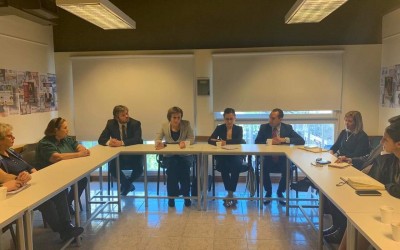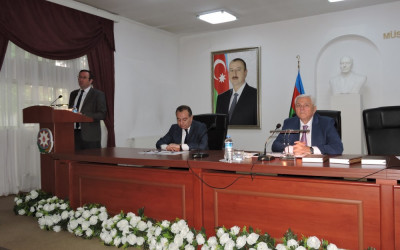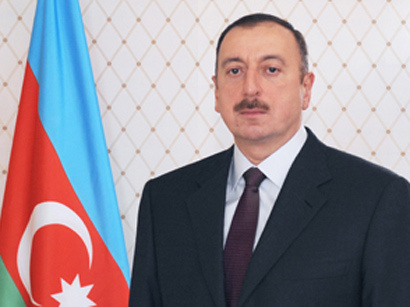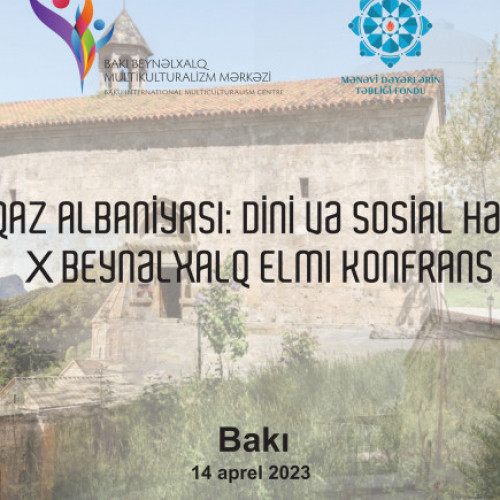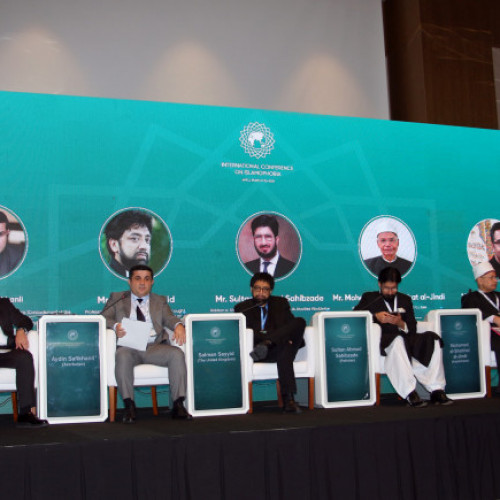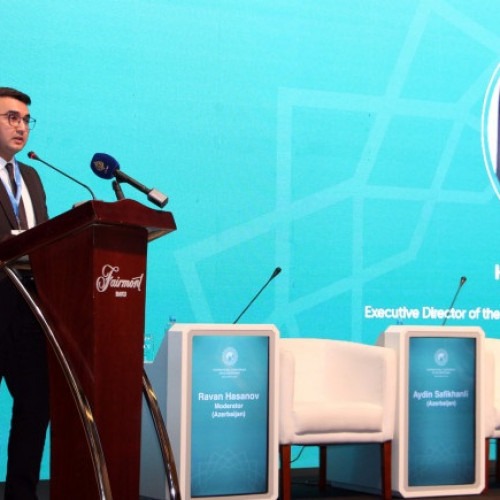Relations between UNESCO and Azerbaijan are expanding and covering new areas
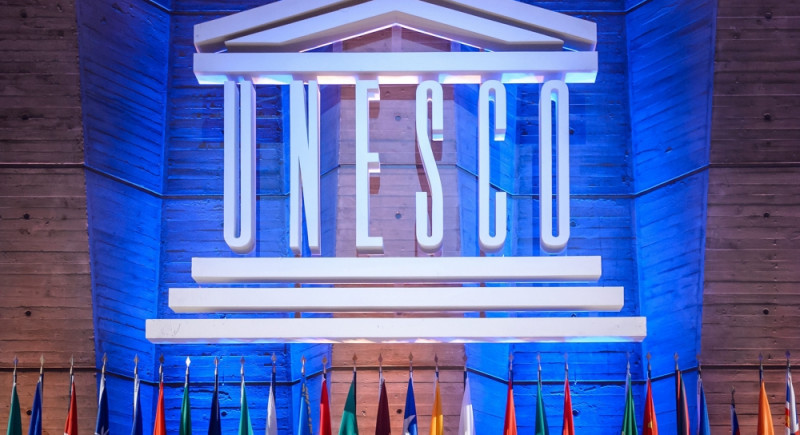
On November 16, the world celebrated the 75th anniversary of the establishment of UNESCO. On that day in 1945, the United Nations Educational, Scientific and Cultural Organization (UNESCO) was founded. The conference held in London adopted the Charter signed by 37 countries of the world. According to their plan, the new organization was founded to help ensure the intellectual and spiritual solidarity of mankind and thus prevent the outbreak of a new world war.
Azerbaijan joined this branch of the UN on June 3, 1992. For more than 29 years, relations between UNESCO and Azerbaijan have been expanding and covering various fields of activity. Azerbaijan has joined many UNESCO conventions in the fields of education, culture, nature protection and sports.
This was stated by the advisor of Baku International Multiculturalism Center, doctor of philological sciences, Aytan Gahraman.
She noted that one of the main directions of the state policy of Azerbaijan is the preservation of national and moral values, historical and cultural heritage, as well as support for the protection and preservation of world heritage at the international level. For this purpose, after regaining its independence, our country established close cooperation relations with UNESCO and contributed to the organization's activities. In Azerbaijan, which successfully hosted the 8th session of the UNESCO Intergovernmental Committee for the Safeguarding of the Intangible Cultural Heritage in 2013, the World Forum for Intercultural Dialogue is successfully held every two years with the official partnership of UNESCO. According to the decision made at the 42nd session of the World Heritage Committee, Azerbaijan got the right to host the next session of this prestigious structure. Thus, on June 30, 2019, the 43rd session of the UNESCO World Heritage Committee was held in Baku. All this is proof of the recognition and appreciation of Azerbaijan's services in the matter of preservation of world heritage objects on an international scale.
The cooperation between Azerbaijan and the organization has intensified with the naming of the First Vice-President of Azerbaijan, President of the Heydar Aliyev Foundation Mehriban Aliyeva as a UNESCO Goodwill Ambassador. Under the leadership and close attention of First Vice-President Mehriban Aliyeva, important work is being done in the direction of protecting tangible and intangible cultural heritage in our country and beyond its borders, as well as promoting Azerbaijani culture in the world.
For several decades, UNESCO has been organizing annual meetings to identify natural or man-made objects that should be popularized and preserved due to their cultural, ecological or historical value.
At the 4th session of the Committee for the Protection of the Intangible Cultural Heritage of UNESCO, held in the capital of the United Arab Emirates Abu Dhabi from September 28 to October 2, 2009, thanks to the efforts of the President of the Heydar Aliyev Foundation, according to the final decision of the structure, Azerbaijani Ashug Art was included in the Representative List intangible cultural heritage of UNESCO.
In addition, in the same session, Novruz holiday was included in UNESCO's Representative List of Intangible Cultural Heritage. Taking into account that it is celebrated in a number of countries, on the recommendation of the organization, this holiday was submitted to UNESCO as an example of international intangible cultural heritage. During the 43rd session of UNESCO's World Heritage Committee held in Baku from June 30 to July 10, 2019, the historical center of Sheki along with the Palace of Sheki Khans was included in UNESCO's World Heritage List.
One of the other important activities of the First Vice-President Mehriban Aliyeva in the field of culture is the international recognition of outstanding figures of Azerbaijani culture, science and art. Thus, in 2005, on the initiative of the Heydar Aliyev Foundation, solemn events dedicated to the 120th anniversary of the great Azerbaijani composer Uzeyir Hajibeyov were held in Baku and Paris. At the same time, the 100th anniversary of the outstanding chemist-scientist, academician Yusif Mammadaliyev was celebrated in Paris, as well as albums and CDs dedicated to the 50th anniversary of the joint creative activity of the world famous musician Mstislav Rostropovich and his wife, opera singer Galina Vishnevskaya were released.
In 2005, the presentation of the musical album "Singers of Karabakh", published by the Heydar Aliyev Foundation, took place at the UNESCO headquarter in Paris.
The Heydar Aliyev Foundation implements very important humanitarian and cultural projects aimed at the protection of cultural monuments not only in Azerbaijan, but also abroad.
This is evidenced by the restoration of two monuments included in the World Heritage List, which were displayed in the park of the Palace of Versailles in Paris by the Heydar Aliyev Foundation in 2007. The Heydar Aliyev Foundation played an important role in the creation of new halls in the Louvre Museum in Paris where examples of architecture, painting and other cultural creations of Islamic civilization are exhibited. The Heydar Aliyev Foundation helped restore the parts of stained glass windows of seven 10th-12th century churches in the settlements of Saint-Hilaire, Ferne-au-Sauvage, Saint-Hilaire-La-Gerard, Tanville, Courjust, Reveyon, Mal in the Orne department of France, and the 14th-century Cathedral of Strasbourg.
The fund has implemented a number of projects for the protection of historical and cultural places in Italy and the Vatican. In 2016, the Heydar Aliyev Foundation restored the catacombs of St. Marcelino and Pietro, as well as the "Hall of Philosophers" in the Capitol Museum. Later, the Foundation began the restoration of the catacombs of St. Sebastian in the Vatican. Two years later, Mehriban Aliyeva, the First Vice-President of Azerbaijan, President of the Heydar Aliyev Foundation, participated in the opening ceremony of the catacombs, which are of invaluable cultural and historical importance for the entire Christian world.
The Heydar Aliyev Foundation joined the initiative to restore the Berlin Castle, which was destroyed and burned during the World War II, and on September 29, 2011, Mehriban Aliyeva presented a check for 50,000 euros to the Berlin Castle as a contribution of the Heydar Aliyev Foundation within the fundraising campaign for the restoration of the Berlin Castle submitted to the management.
I would also like to mention the restoration of the "Trapezitsa" architectural-museum reserve located in Veliko Tarnovo, the cultural and spiritual capital of Bulgaria. The Heydar Aliyev Foundation made an important contribution to the restoration of this architectural pearl and the spiritual center of the Second Bulgarian Kingdom. The Heydar Aliyev Foundation carried out the conservation and restoration of the 158-meter-long western wall of the historical monument, the construction of the 880-meter-long tourist alley, the creation of the Cultural Heritage Center, and the repair and conservation of 3 medieval churches located in this area. Conservation and restoration works in "Trapezitsa" Architectural Museum Reserve, which is one of the historical tourist centers of Bulgaria and Eastern Europe, continued for 10 months.
This project is, in fact, the largest cultural project of the Foundation in the entire Balkan region. On September 22, 2016, Mehriban Aliyeva, the First Vice-President of Azerbaijan, President of the Heydar Aliyev Foundation, and Leyla Aliyeva, the Vice-president of the Foundation, participated in the opening ceremony of the Trapezitsa Architecture Museum Reserve.
In addition, the Foundation has implemented a large number of social projects to support education, in particular, it has supported projects for the construction of schools in Pakistan and Vietnam, social centers in Bosnia and Herzegovina, etc.
For many years, our country has been contributing to the restoration of world cultural heritage, both in Azerbaijan and globally, and partnership relations between our country and UNESCO are constantly developing at a high level.
The victory of Azerbaijan in the victorious 44-day war has led to the emergence of new realities in the region, which causes concern in some political circles, and these circles cannot come to terms with the new situation. In this context, UNESCO, as an intergovernmental organization that should act objectively and impartially within its mandate, got involved in this inappropriate process and became a tool of political pressure.
Azerbaijan has repeatedly raised the issue of the situation and fate of the cultural heritage destroyed and looted in our territories occupied by Armenia, has repeatedly appealed to UNESCO with a request to take measures for its protection and to send a mission to these territories. Unfortunately, none of these appeals have been adequately answered.
Since 1996, official Baku has informed UNESCO about the looting of cultural heritage in the territories of Azerbaijan occupied by Armenia, and requested measures to ensure the return of this cultural heritage to Azerbaijan.
In 2005, UNESCO's 1995-2004 report on the implementation of the 1954 Hague Convention "On the Protection of Cultural Property in the Time of Armed Conflict" clearly stated that Azerbaijan informed the UNESCO Secretariat about the situation. The report notes the destruction by Armenia in these regions of 927 libraries, more than 60 mosques, 44 temples, 473 historical monuments, palaces and museums by Armenia in these areas, as well as the illegal export and 40 thousand museum exhibits, rare art pearls, manuscripts, miniatures, valuable Karabakh carpets, souvenirs items, historical decorations, information on the sale of archaeological samples abroad. These actions clearly contradict and violate the 1970 UNESCO Convention on the Prohibition and Suppression of the Illicit Import, Export and Transfer of Cultural Property. From 2020, the organization announced November 14 as the International Day of Combating Illegal Trade in Cultural Property. However, despite this, the results of the work of this institution are not visible.
In 2007, the book "War against Azerbaijan - attack on cultural heritage" was prepared and submitted to UNESCO. Here is a list of cultural and religious monuments destroyed by Armenia in the occupied territories of our country, detailed information about their deliberate Armenianization, presentation of Albanian churches as Armenian.
During the visit to Baku of the former Director General of UNESCO Koichiro Matsuura, the Azerbaijani side offered to organize such a mission. The director general then noted that the issue is being monitored and he could not say the exact time of the mission.
In 2016, in the framework of the "Year of Multiculturalism" Aytan Gahraman gave detailed information about the destruction of material, cultural and religious heritage in the occupied territories of our country at the conference "Importance of Multiculturalism and Successful Azerbaijani Model" at the UNESCO headquarter.
The doctor of philological sciences noted in that conference that information had been received about the use of the Aghdam Juma mosque by Armenia for military purposes, thereby grossly violating international law, including the 1954 Hague Convention on the Protection of Cultural Resources during Armed Conflicts.
In January 2018, in front of UNESCO and specifically Ms. Audrey Azoulay, she raised the issue of sending a mission by the organization to the occupied territories. Throughout this period, the international community, including UNESCO, was regularly informed about Armenia's illegal actions in the occupied territories of Azerbaijan, and the organization was called upon to fulfill its mission independently and objectively, not allowing the issues of cultural heritage protection to be politicized.
As we know, one of the most important areas of UNESCO's activity is the solution of environmental problems and environmental protection, as well as the mandate to implement specific programs in this field.
Thus, on October 5, 1948, the Constituent Assembly of the International Union for Conservation of Nature (IUCN) was held in Fontainebleau (France) with the assistance of UNESCO. Now this Union has become a global organization dealing with nature protection. The main goals and tasks of the International Union for Conservation of Nature (IUCN) are to protect nature and especially biodiversity as the main foundation for the future, to ensure the sustainable and wise use of natural resources, and to ensure the harmonious development of society with the rest of the biosphere.
So, for example, in Azikh cave, which is a world important archaeological monument, as well as in Aghdam, Armenia carried out illegal archaeological excavations and took valuable finds out of Azerbaijan. Before the occupation, these areas were covered with about 228,000 hectares of forest, but after the occupation, 100,000 hectares of forest area were burned, causing great damage to the flora and fauna of Karabakh. Deforestation and fires have destroyed the habitats of animals. On the other hand, the deliberate pollutions in Araz, Basitchay, Bargushadchay and Okchuchay became an ecological disaster. They were left out of ecological control, for many years it was not possible to get accurate information about the state of river basins. According to the results of the currently conducted monitoring, it was determined that these rivers are heavily polluted with heavy metals by the untreated industrial waters of the Zangezur copper-molybdenum and Gafan copper ore processing plants located in the territory of Armenia. In 2020, the brave Azerbaijani Army liberated our lands from occupation under the leadership of the Commander-in-Chief. As a result, the whole world once again witnessed the atrocities committed by Armenia against our cultural heritage.
During the 44-day Patriotic War, President of Azerbaijan Ilham Aliyev gave more than 30 exclusive interviews to foreign media, raising the issue of Armenia's encroachment on Azerbaijan's cultural, historical and religious heritage.
With the end of the 44-day war, dozens of foreign and local mass media representatives, representatives of diplomatic corps and international organizations accredited in Azerbaijan, scientists from different countries visited the liberated territories and witnessed the mass destruction. They spread what they saw with their own eyes to the whole world. Photos depicting the results of the Karabakh war, the destruction of the cities and villages of Azerbaijan during the occupation by the Armenian invaders are displayed at prestigious international exhibitions. The world is beginning to recognize the truth of what is happening.

